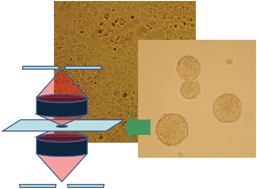Fourier transform infrared (FTIR) spectromicroscopic characterization of stem-like cell populations in human esophageal normal and adenocarcinoma cell lines†
Abstract
We have tested an approach to identify putative cancer

* Corresponding authors
a Department of Surgery and the Cancer Stem Cell Research Group, College of Medicine, and the Canadian Light Source, University of Saskatchewan, Saskatoon, SK, Canada
b
Royal University Hospital, Suite 2646, 103 Hospital Drive, Saskatoon, SK, Canada
E-mail:
alan.casson@usask.ca
Fax: 306-966-8026
Tel: 306-966-8641
c
Swiss Light Source, 5232 Villigen-PSI, Switzerland
E-mail:
luca.quaroni@psi.ch
Fax: +041 (0)563102111
Tel: +041 (0)563102199
We have tested an approach to identify putative cancer

 Please wait while we load your content...
Something went wrong. Try again?
Please wait while we load your content...
Something went wrong. Try again?
R. Zhao, L. Quaroni and A. G. Casson, Analyst, 2010, 135, 53 DOI: 10.1039/B914311D
To request permission to reproduce material from this article, please go to the Copyright Clearance Center request page.
If you are an author contributing to an RSC publication, you do not need to request permission provided correct acknowledgement is given.
If you are the author of this article, you do not need to request permission to reproduce figures and diagrams provided correct acknowledgement is given. If you want to reproduce the whole article in a third-party publication (excluding your thesis/dissertation for which permission is not required) please go to the Copyright Clearance Center request page.
Read more about how to correctly acknowledge RSC content.
 Fetching data from CrossRef.
Fetching data from CrossRef.
This may take some time to load.
Loading related content
